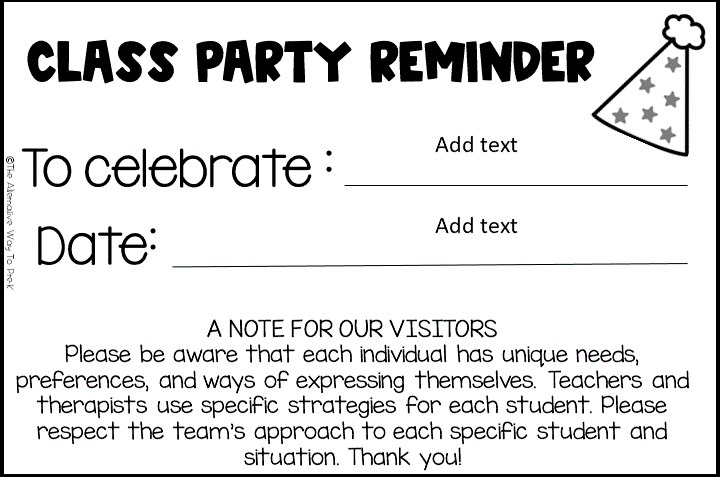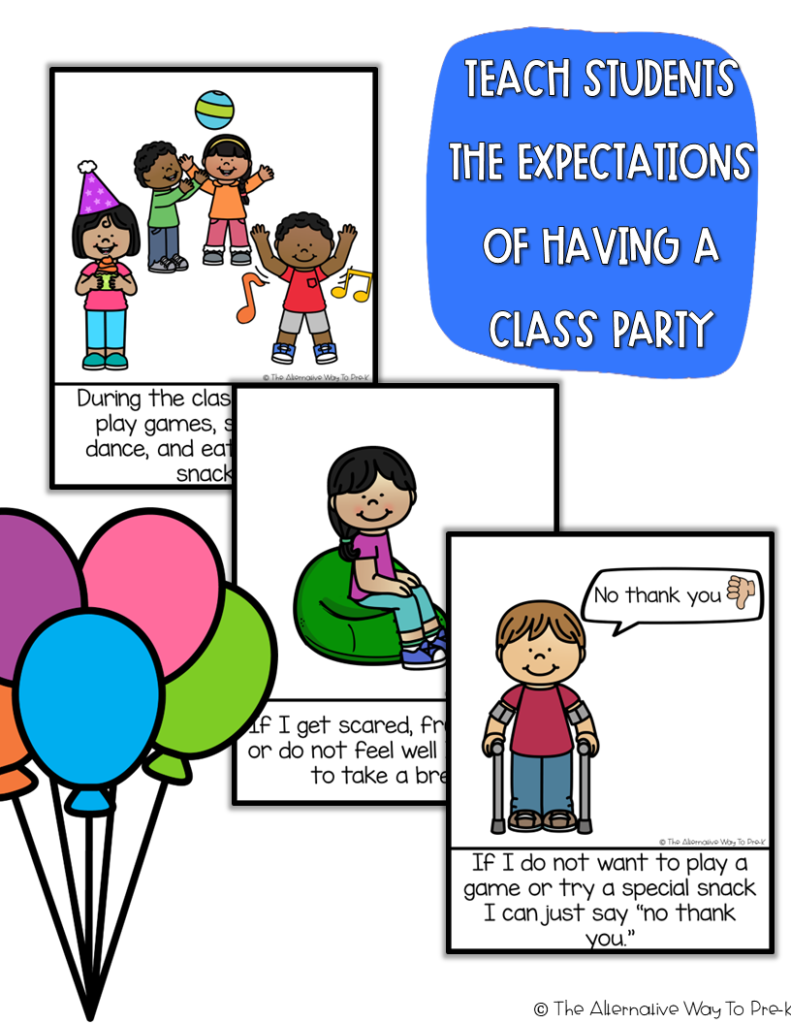Do you have class parties at your school? What about in your special education classroom? If you are in a general education classroom, do your special education students participate? Do they get anxious?
If you answered yes to any of these questions keep reading. In this blog post, I will discuss how class parties can impact students, especially our special education students, and some to help run things smoother.
When I was in the classroom I used to DREAD class parties. I knew it meant parents/guardians judging how I managed specific student behaviors and that some of my students would be triggered.
Over the years, I learned some tricks that helped not only ease my anxiety towards class parties but also my students.
1) Provide Choices

Not every kid wants to decorate the cookie or do a bean bag toss. Some students will engage in the materials by stimming on them and others will use them for what they were not originally attended for.
All of this is okay!
When we provide students the opportunity to engage with the materials in their preferred way they are going to be a lot happier and probably attend longer since it is preferred. It’s a party, after all! Let them celebrate the way they want to!
It’s also important to provide a variety of multisensory materials and activities for students to engage in. Have ones that are seated and others standing and active. Include tactile opportunities like playing in a themed sensory bin but also a sensory-friendly option like singing a song.
Make sure students can make choices. A great way to do this is by setting up different centers or stations. Let them lead you, or their accompanying adult, on how they would like to participate if at all.
2) Optional Participation
If a child does not want to participate in the party, do not make them. If they can communicate they need to sit this one out, allow them to leave the group or even the room.
Have a student who wanders away from the group but is still in the classroom and is safe? Let them!
Some students do not want to engage in the activities and are overstimulated. By removing themself from the group, they are self-regulating.
Plan with your team (paraprofessionals, SLP, OT, etc) ahead of time and designate who will be the one to monitor students who opt out of the class party.
3) Limit the Number of Visitors
This one may seem controversial and may not always be feasible but limit the number of visitors attending.
Remember the COVID days when visitors could not come in? Guess what? The parties happened, and the kids still had fun without them!
Depending on your class, you may want to consider not inviting visitors to the class party. We remove a huge piece of the trigger puzzle when we eliminate the visitors. You can still involve guardians by sending pictures and videos.
Now that isn’t always possible and in some schools not allowed. However, you can encourage visitors to only allow 1-2 visitors max per child. When you have a class full of ten kids, and each set of parents wants to bring a sibling or grandparent, you have 30 extra bodies in your room before you know it.
Another idea is to do a Sign-Up genius for attendance. If you are having an hour-long party divide visitors into two slots. Half of them come in the beginning and then the next set.
Warning, be prepared for some visitors that try to linger. You will have to enforce the time limit heavily.
4) Prepare Students
Just as we would prepare our students for a change in schedule or a field trip, we need to prepare them for class parties.
Start talking about it up to two weeks in advance. Provide visuals of activities that will be available. Practice those games and activities ahead of time.
Read a social story about what to expect at the class party. Proactively provide as much information ahead of time as possible to help ease students’ anxiety.
5) Prepare Visitors

This one may be new for you, but prep visitors.
Depending on your class makeup, it sometimes is a good idea to let your visitors know what they may encounter.
Inform them that they may encounter some classmates who may not want to engage with them, become overstimulated or anxious with new visitors, or may choose to opt out completely.
Share that each individual is unique and has specific strategies that work for them. Students may also have different needs and/or preferences. Emphasize, to your visitors that although a student may appear not to be engaged with the group, the team has plans for each student.
Ask them to please trust and respect our response to these situations. This can be done with a short footnote on your class party invitation. You can grab a free template in my FREE resource library here.

